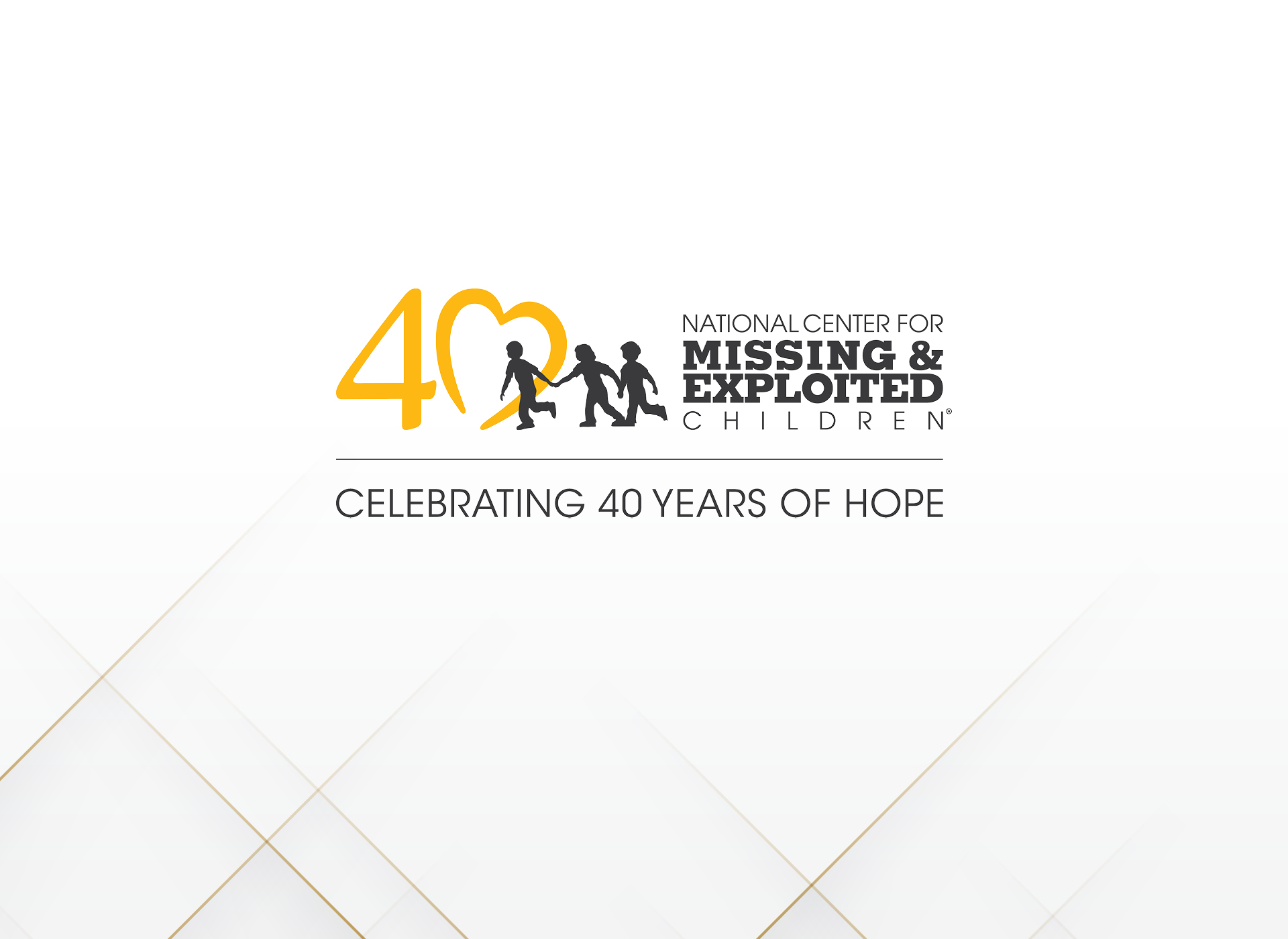40 Years of Hope
Be part of our celebration! Join us here each week to learn a little more about NCMEC.
NCMEC Begins Age Progressing Long-Term Missing Children
In 1989, NCMEC pioneered age progressions of missing children as a tool to help show what a child might look like as time passes. NCMEC used early digital imaging technology, scanning in print photos of the child and other family members to create a composite image. NCMEC was also using clay to create some of our first facial reconstructions of unidentified deceased children.
* * *
In the late 1970s and early 1980s, a series of devastating events – including the abductions of Etan Patz and Adam Walsh and a series of kidnappings and murders in Atlanta, Georgia – shed light on the critical issue of missing children in the United States. All over America, children were disappearing and there was no infrastructure or national resources to assist law enforcement or their families in finding them. Realizing the urgent need to tackle the problem, parents and advocates joined forces and pushed Congress to act. Their hard work paid off in 1984, when President Ronald Reagan officially established the National Center for Missing & Exploited Children (NCMEC) to serve as the primary resource for missing children nationwide.
Over the past 40 years, we have expanded our mission to also include protecting children from exploitation. In 1998, we established the CyberTipline to combat the threat of child sexual exploitation, continuously monitoring and addressing emerging online threats to children.
Remaining true to our founding principles, NCMEC has assisted in the recovery of more than 400,000 missing kids and circulated billions of photos of missing children. We’ve produced thousands of age-progressed photos of long-term missing children and hundreds of facial reconstructions to aid in identifying unidentified children. Our unwavering commitment over the past four decades has revolved around a single, shared objective: ensuring that every child has a safe childhood.
We’ll update this blog each week with highlights from the past 40 years of NCMEC’s history. You can also follow our social channels, @NCMEC, every Wednesday to like and share the posts so more people can learn about the history of child protection in America.
In February 2023, NCMEC launched “Take It Down,” a brand new service designed to help kids take back control of their nude, partially nude or sexually explicit photos and videos online. Take It Down works by assigning a unique digital fingerprint, called a hash value, to the image. Online platforms can use hash values to detect these images or videos on their services and remove this content. This all happens without the image or video ever leaving your device or anyone viewing it.
In the early ‘90s, NCMEC and Blockbuster Video partnered on a program called “Kidprint” across Blockbuster’s 1,300 stores nationwide. Parents could bring their children to stores to be recorded for free on VHS tape so they would be prepared with a video if their child ever went missing.
In late 1985, Teddy Ruxpin, the popular talking teddy bear, became the official “spokesbear” of NCMEC to promote educational programs for children. The bear would offer advice on how to avoid abduction and sexual exploitation. An animated Teddy also appeared in “Protect Yourself” PSAs that ran with the “Adventures of Teddy Ruxpin” cartoon and featured many popular celebrities, including Shannen Doherty.
Camille Bell became an advocate for Atlanta’s missing and murdered children after her son, 9-year-old Yusuf Bell, was killed in 1979. Yusuf was among the 29 African American boys and young men who were kidnapped and murdered in Atlanta, Georgia between 1979 – 1981. These disturbing cases, now known collectively as the “Atlanta Child Murders,” helped spur the first national symposium on missing and murdered children in Kentucky – a catalyst for the formation of NCMEC.
When an AMBER Alert buzzes on your phone, it’s just one piece of a legacy that has endured for nearly 30 years. In 1996, 9-year-old Amber Hagerman was abducted while riding her bike in an abandoned grocery store parking lot in Arlington, Texas. Amber was found murdered several days later. This tragedy sparked the idea for an alert system that has grown into the AMBER Alert program we rely on today.
Did you know? The late civil rights activist, Ozell Sutton, helped organize the first national symposium on missing and murdered children in Louisville, Kentucky in 1981, a catalyst for NCMEC’s opening just three years later. Read more about Ozell’s lifelong commitment to children here.
